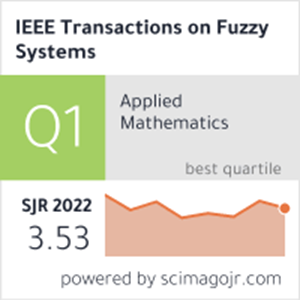工业软传感器建模的模糊分层随机组态网络
IF 10.7
1区 计算机科学
Q1 COMPUTER SCIENCE, ARTIFICIAL INTELLIGENCE
引用次数: 0
摘要
传统的基于随机组态网络(SCNs)的工业软传感器存在不能考虑“慢”特性和难以处理基于规则的信息的缺点。原有的基于固定结构自编码器的慢速特征提取方法缺乏灵活性,难以在效率和精度之间保持平衡。为了解决这些问题,提出了一种模糊层次SCNs (FHSCNs)框架,该框架由一个缓慢特征提取块、一个模糊推理块和一个增强输出块组成。设计了慢变特征提取模块,利用基于共享参数的两个scn自编码器和scn的增量学习范式,有效地自适应提取慢变潜在特征。提出了模糊推理块,可以处理基于规则的慢速特征信息。模糊推理块可以使模型具有模糊推理能力,提高模型的可解释性。提出了具有增强层和直接连接部分的增强输出块,使FHSCNs具有捕获模糊规则特征的线性和非线性的能力。通过综合实验验证了该框架在构建工业软传感器模型方面的有效性。本文章由计算机程序翻译,如有差异,请以英文原文为准。
Fuzzy Hierarchical Stochastic Configuration Networks for Industrial Soft Sensor Modeling
Traditional stochastic configuration networks (SCNs)-based industrial soft sensors have the shortcomings of failing to account for “slowness” characteristic and struggling with processing rule-based information. The original slow feature extraction methods based on autoencoders with fixed structure are lack of flexibility and difficult to maintain a balance between efficiency and accuracy. To address these challenges, a framework of fuzzy hierarchical SCNs (FHSCNs) is proposed, which consists of a slow feature extraction block, a fuzzy inference block and an enhanced output block. The slow feature extraction block is designed, which utilizes a autoencoder based on two SCNs with shared-parameters and the incremental learning paradigm of SCNs to efficiently and adaptively extract the slow-varying latent features. The fuzzy inference block is proposed, which can process rule-based slow feature information. The fuzzy inference block can allow the model to have the fuzzy reasoning capabilities and improve the model interpretability. The enhanced output block with an enhancement layer and a direct-connect portion is presented, which enables the FHSCNs to have the ability of capturing both linearity and nonlinearity of the fuzzy rule-based features. The proposed framework is validated through comprehensive experiments to demonstrate its effectiveness in constructing industrial soft sensor model.
求助全文
通过发布文献求助,成功后即可免费获取论文全文。
去求助
来源期刊

IEEE Transactions on Fuzzy Systems
工程技术-工程:电子与电气
CiteScore
20.50
自引率
13.40%
发文量
517
审稿时长
3.0 months
期刊介绍:
The IEEE Transactions on Fuzzy Systems is a scholarly journal that focuses on the theory, design, and application of fuzzy systems. It aims to publish high-quality technical papers that contribute significant technical knowledge and exploratory developments in the field of fuzzy systems. The journal particularly emphasizes engineering systems and scientific applications. In addition to research articles, the Transactions also includes a letters section featuring current information, comments, and rebuttals related to published papers.
 求助内容:
求助内容: 应助结果提醒方式:
应助结果提醒方式:


